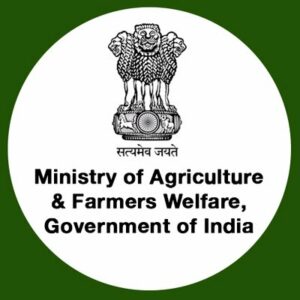Govt’s Arka Rakshak Scheme To Bring Relief To Farmers From Rice Diseases: Rice is a staple food for millions of people in India. However, rice farmers in India often face the challenge of crop diseases. These diseases can cause significant damage to crops, leading to crop losses and financial hardship for farmers.
One of the most common rice diseases is tomato leaf curl virus (TLCV). TLCV is a virus that can cause severe leaf curl, stunting, and yield losses in rice. Another common rice disease is bacterial wilt, which can also cause significant crop losses.
Traditional Practices For Rice Diseases in India Before Switched Into Inorganic Manure
There is no manure that is specifically resistant to TLCV and bacterial wilt. However, there are some manures that can help to improve the overall health of the soil, which can make it more resistant to diseases. These manures include:
Compost: Compost is made from organic materials, such as food scraps, yard waste, and manure. It is a good source of nutrients for the soil and can help to improve drainage and aeration.
Green manure: Green manure is a crop that is grown specifically to be turned back into the soil. It is a good source of nitrogen and other nutrients, and it can help to suppress weeds.
Animal manure: Animal manure is a good source of nutrients for the soil, but it can also contain harmful bacteria. It is important to compost animal manure before applying it to the soil.
In addition to using manure, farmers can also help to prevent TLCV and bacterial wilt by practicing good agricultural practices. These practices include:
Crop rotation: Rotating crops helps to break the lifecycle of diseases.
Water management: Avoiding waterlogging can help to prevent the spread of diseases.
Sanitation: Removing crop residues and weeds can help to reduce the spread of diseases.
Pest control: Using integrated pest management (IPM) practices can help to reduce the use of pesticides, which can also help to prevent diseases.
By using a combination of these methods, farmers can help prevent TLCV and bacterial wilt in their crops and protect their yields.
After The Green Revolution, The Necessity For More Production Of Rice In India
 M.S. Swaminathan is considered the father of the Green Revolution in India. He was a scientist and agricultural economist who played a key role in the development of high-yielding varieties of wheat and rice. These varieties, along with the use of fertilizers and pesticides, led to a dramatic increase in crop yields in India.
M.S. Swaminathan is considered the father of the Green Revolution in India. He was a scientist and agricultural economist who played a key role in the development of high-yielding varieties of wheat and rice. These varieties, along with the use of fertilizers and pesticides, led to a dramatic increase in crop yields in India.
The Green Revolution helped to solve the problem of food scarcity in India and contributed to the country’s economic development. However, it also had some negative effects, such as:
Increased use of chemicals: The use of fertilizers and pesticides increased significantly during the Green Revolution. This led to environmental pollution and health problems for farmers and consumers.
Increasing inequality: The benefits of the Green Revolution were not evenly distributed. Large farmers benefited the most, while small farmers and landless laborers saw little improvement in their livelihoods.
Loss of biodiversity: The Green Revolution led to the cultivation of a narrower range of crops. This reduced the diversity of the Indian agricultural sector and made it more vulnerable to pests and diseases.
Waterlogging and salinization: The use of irrigation increased during the Green Revolution. This led to waterlogging and salinization in some areas, which damaged agricultural land.
Despite these negative effects, the Green Revolution was a major success in terms of increasing food production. It is important to learn from the mistakes of the Green Revolution and develop more sustainable agricultural practices in the future.
Likewise, rice varieties in India have these negative effects, like over usage of chemicals to fight against rice diseases leading to a reduction of rice quality. And increasing their potential against the chemicals. The bacteria of rice diseases become more adaptive to the chemicals and become strong enough to come back after the usage of heavy chemicals.
It makes the farmers, face terrible loss of crops due to their effects. Whenever the rice crops start losing their yielding capacity, they won’t contribute enough production to the country. Financially country must face the consequences of rice due to its scarcity which is a major feed to many people across the country.
Arka Rakshak Scheme: A Boon For Farmers | How the Arka Rakshak Scheme Helps Farmers
The Arka Rakshak scheme is a government initiative launched in 2023 by the Indian Council of Agricultural Research (ICAR) to help farmers fight rice diseases. The scheme provides farmers with free seeds of the Arka Rakshak rice variety, which is resistant to three major rice diseases: tomato leaf curl virus (TLCV), bacterial wilt, and early blight.
The Arka Rakshak rice variety has the potential to increase yields by up to 20% and reduce the use of pesticides by up to 50%. This will help farmers to save money and improve their yields.
The Arka Rakshak scheme is being implemented in all states of India. The scheme is expected to benefit millions of farmers across the country.
In addition to the Arka Rakshak rice variety, the scheme also provides farmers with access to other agricultural inputs, such as fertilizers and pesticides. The scheme also provides farmers with training on how to grow and care for the Arka Rakshak rice variety.
 The implementation areas of the Arka Rakshak scheme include:
The implementation areas of the Arka Rakshak scheme include:
- Training of farmers on how to grow and care for the Arka Rakshak rice variety.
- Provision of free seeds of the Arka Rakshak rice variety to farmers.
- Provision of other agricultural inputs, such as fertilizers and pesticides, to farmers.
- Monitoring of the performance of the Arka Rakshak rice variety.
The output of the Arka Rakshak scheme is expected to be:
- Increased yields of rice
- Reduced use of pesticides
- Improved livelihoods of farmers
- Protection of rice crops from diseases
The Arka Rakshak scheme is a welcome initiative by the government to help farmers fight rice diseases. The scheme is expected to benefit millions of farmers across India and boost agricultural production in the country.
How The Scheme Justifies Farmers
The Arka Rakshak scheme is a welcome initiative by the government to help farmers fight rice diseases. The scheme is expected to benefit millions of farmers across India.
The scheme is justified because it will help farmers to:
- Increase their yields
- Reduce their costs
- Improve their livelihoods
- Protect their crops from diseases.
The scheme is also expected to boost agricultural production in India and help the country to achieve self-sufficiency in rice production.
Benefits Of The Arka Rakshak Scheme
Increased yields: The Arka Rakshak rice variety has the potential to increase yields by up to 20%. This means that farmers can earn more income from their crops.
Reduced use of pesticides: The Arka Rakshak rice variety is resistant to pests and diseases, so farmers can reduce the amount of pesticides they use. This is good for the environment and the health of farmers.
Improved livelihoods: The Arka Rakshak scheme is expected to improve the livelihoods of millions of farmers. Farmers will be able to earn more income from their crops, which will help them to improve their standard of living.
Protection of crops from diseases: The Arka Rakshak rice variety is resistant to pests and diseases, so farmers can protect their crops from damage. This will help to ensure that farmers have a good harvest every year.
Conclusion
The Arka Rakshak scheme is a significant step forward in the fight against rice diseases in India. The scheme is expected to benefit millions of farmers and help to boost agricultural production in the country.
The scheme is a welcome initiative by the government and is justified because it will help farmers improve their livelihoods and protect their crops from diseases. The scheme is expected to have a positive impact on the Indian economy and help to improve the food security of the country.
In addition to the benefits mentioned above, the Arka Rakshak scheme is also expected to have a number of other positive impacts, such as:
- Reducing the use of pesticides, which can pollute the environment
- Creating jobs in the agricultural sector
- Improving the resilience of the agricultural sector to climate change
The Arka Rakshak scheme is a major step forward in the fight against rice diseases in India. The scheme is expected to have a positive impact on the lives of millions of farmers and the Indian economy as a whole.
